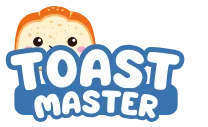In a world where clarity is king, technical documentation often reigns supreme. Whether it’s a user manual that saves someone from a tech disaster or an API guide that turns developers into superheroes, the ability to write effective documentation can make all the difference. But let’s face it—writing technical documentation can feel like deciphering hieroglyphics while juggling flaming torches.
Table of Contents
ToggleUnderstanding Technical Documentation
Technical documentation serves as an essential resource for conveying complex information clearly. It includes various forms, such as user manuals and API guides, aimed at different audiences.
What Is Technical Documentation?
Technical documentation refers to specialized documents that convey specific information regarding products, systems, or services. This documentation serves as a guide for users, developers, and stakeholders, detailing how to use or implement a particular technology. Examples include installation instructions, troubleshooting guides, and software specifications. Clarity ensures that end-users can comprehend and effectively utilize the technology without extensive training.
Importance of Technical Documentation
The importance of technical documentation lies in its ability to provide clarity and support for users. Comprehensive documentation facilitates smoother onboarding and faster product adoption. It minimizes the need for direct support, allowing users to find solutions independently. Moreover, well-organized documentation enhances product usability, leading to increased satisfaction and reduced frustration. In the tech industry, accurate technical documentation promotes better communication among team members, ensuring consistent understanding and execution of tasks.
Planning Your Technical Documentation

Planning serves as a critical step in the creation of effective technical documentation. Proper planning ensures clarity and relevance, allowing users to find the information they need quickly.
Identifying Your Audience
Identifying the audience for technical documentation helps tailor content to specific needs. Recognizing whether documents target end-users, developers, or stakeholders ensures appropriate language and depth. Understanding the audience’s knowledge level also determines how much background information to include. For example, a beginner might require detailed explanations, while an experienced user may prefer concise instructions. Researching demographics and preferences further refines the documentation approach. Engaging with potential users through surveys or interviews can provide valuable insights into what they expect.
Defining the Documentation Scope
Defining the scope of technical documentation establishes clear boundaries on topics covered. Clarifying what will and won’t be included helps focus the writing process and makes it more efficient. Listing key features, functions, and limitations ensures comprehensive coverage without overwhelming users. Setting priorities also clarifies which documentation types, such as user guides or API references, are necessary based on project requirements. Consulting with project managers and subject matter experts can clarify essential elements to cover. Moreover, a well-defined scope serves as a roadmap for maintaining consistency and coherence throughout the documentation process.
Structuring Your Technical Documentation
Structuring technical documentation involves selecting a format that enhances usability and readability. A coherent structure ensures that users easily navigate complex information.
Common Formats for Technical Documentation
Several formats effectively convey technical information. User manuals serve as comprehensive guides for end-users. API documentation specializes in detailing programming interfaces, allowing developers to understand functionalities. Knowledge bases house searchable articles that address common questions. Additionally, quick reference sheets provide essential information at a glance. Choosing the right format depends on the intended audience’s needs.
Best Practices for Organizing Content
Organizing content improves clarity and accessibility. Start with an intuitive table of contents to guide users. Use headings and subheadings consistently to break down information effectively. Including bullet points can highlight important details and make it easier to scan through sections. Incorporate diagrams or screenshots where necessary, as visuals enhance understanding. Maintain a logical flow, presenting topics in a progressive manner. Prioritize information based on user requirements to ensure key concepts are front and center.
Writing Tips for Technical Documentation
Creating effective technical documentation hinges on clarity and conciseness. Each section should convey essential information without overwhelming the audience. Writers prioritize straightforward language, avoiding jargon unless necessary. Clear headings allow readers to navigate sections effortlessly. Each sentence should focus on a single idea, with specific examples to illustrate points. Summarizing complex information into digestible chunks often aids in comprehension.
Clarity and Conciseness
Clarity plays a crucial role in technical documentation. Writers strive to use simple sentences that communicate ideas effectively. Adopting consistent terminology helps maintain understanding throughout the document. Define terms and acronyms when first introduced; this approach minimizes confusion. Conciseness is equally important; brevity improves readability. Unnecessary details can distract from the main message, so eliminate any superfluous information. Practical examples reinforce instructions, enabling users to relate to the content easily. Aim for language that engages the reader while delivering clear, actionable insights.
Using Visual Aids Effectively
Visual aids can significantly enhance technical documentation’s effectiveness. Incorporating diagrams, screenshots, and flowcharts supports text by illustrating complex concepts. Writers select visuals that complement the written content, using them to clarify instructions. Each visual should include descriptive captions, providing context to the reader. Additionally, aligning visuals with the flow of information improves comprehension. When creating tables, aim for simplicity; well-organized data can convey a wealth of information at a glance. Using colors strategically adds emphasis and guides attention without being distracting. Visual aids, when used thoughtfully, can simplify complex ideas and improve user engagement.
Reviewing and Revising Technical Documentation
Reviewing and revising technical documentation is crucial for ensuring that content remains accurate and user-friendly. It fosters clarity and meets user needs effectively.
Incorporating Feedback
Incorporating feedback enhances the quality of documentation. Gather insights from users and stakeholders to understand areas requiring improvement. Utilize surveys or interviews to collect diverse perspectives. Analyzing feedback helps identify common issues, allowing for targeted revisions. Implement suggestions that align with users’ experiences to improve overall satisfaction. Engaging with team members can also uncover inaccuracies or omissions that may need addressing.
Common Mistakes to Avoid
Avoiding common mistakes improves the effectiveness of technical documentation. Ensure that jargon does not overwhelm readers unfamiliar with specific terms. Maintain consistency in formatting for a professional appearance. Neglecting thorough reviews may lead to errors or unclear instructions, hindering usability. Failing to update documentation with product changes results in misinformation. Ensure that visual elements complement the text instead of complicating understanding. Checking for grammatical errors before finalizing documentation can enhance professionalism and credibility.
Effective technical documentation is a vital component of successful technology implementation. By prioritizing clarity and accessibility writers can create resources that empower users and enhance their experience. Understanding the audience’s needs and structuring content thoughtfully ensures that information is easily digestible and relevant.
Incorporating visuals and adhering to best practices for organization further enhances usability. Regular reviews and updates based on user feedback keep documentation accurate and aligned with product developments. By committing to these principles writers can produce documentation that not only informs but also fosters user satisfaction and confidence in the technology.




